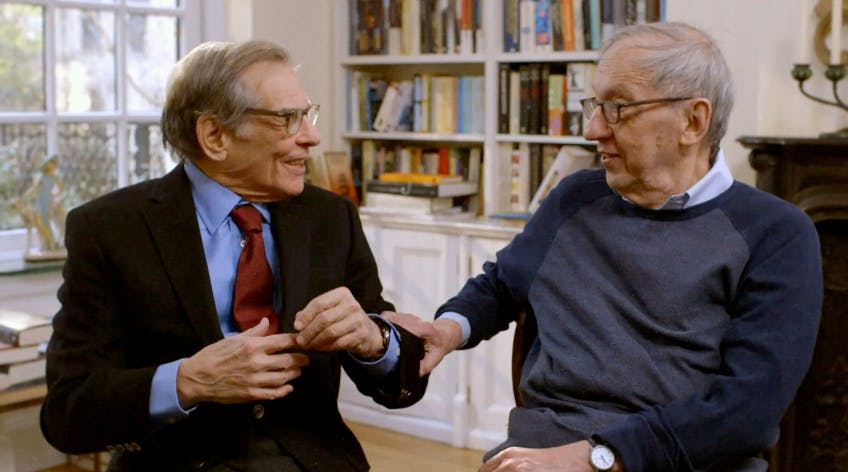When Biographers Go Where Historians Won’t
The relevance of ‘The History Wars’ to public debates in this country becomes apparent when the term ‘culture wars’ is substituted.

‘The History Wars: The Peter Ryan-Manning Clark Controversy’
By Doug Munro
ANU Press, 230 pages
Available as a free download at https://press.anu.edu.au/publications/history-wars
Here’s how a Pacific Islands historian became a biographer: “Right from the start I knew instinctively that it was pointless trying to understand historians from their writings alone, as if a historian and his or her works are unrelated to each other.”
Doug Munro’s statement seems obvious, yet certain historians resist biography. They abjure the indiscipline of an inquiry into the messiness of individual lives, transforming history into a parade of personalities — which is what history became in 1993 when editor Peter Ryan, a former director of Melbourne University Press, attacked his most famous author, Manning Clark (1915-91), author of a renowned six-volume history of Australia.
I can think of no equivalent to the Pacific Island controversy in this country. You would have to imagine the celebrated editor Robert Gottlieb of Knopf attacking his equally famous Lyndon Johnson biographer, Robert Caro — the two who are the subject of the documentary “Turn Every Page” — calling his author’s methods sloppy and tendentious, and the author himself a phony.
Clark, a national institution when he died, spoke to a general readership that craved a narrative sense of the Australian past that he increasingly viewed as separable from the colonial mentality of some of its leaders. The force of his personality permeated his work even as he denigrated academic colleagues, whom he regarded as niggling adversaries of history as a visionary experience.
Clark exposed himself to criticism for neglecting the burgeoning historical literature on Australia in favor of his own singular interpretations. He wrote as though Australian history did not have a historiography but only a story to tell in his depiction of the land, its people, and its outstanding personalities
The faults in Clark’s history, as well as his dismissal of fellow historians, led to a diminishing interest in his work, save for Ryan’s attack, blasting not only Clark but academic historians who, he claimed, had ignored or indulged Clark’s shortcomings.
It is not an accident, as Doug Munro points out, that the turn against Clark came at a time when conservatives in Australia were mounting an attack on left-wing historians inspired by Clark, whom the right regarded as a quasi-Marxist ideologue.
Mr. Munro’s diligent archival research study deals not only with the national debates on the meaning of Australian history but also with how the personalities of Clark, Ryan, and others became enmeshed with how their views of history evolved.
In Mr. Munro’s incisive analysis, Clark’s arrogance is given a full airing, but Ryan emerges as the villain, an opportunist who aligned himself with a growing conservative movement. Mr. Munro catches Ryan, who died in 2015, in several outright lies, and provides excruciating evidence that, in effect, Ryan backdated his objections to Clark, voicing very little concern when the volumes were in production.
The relevance of “The History Wars” to public debates in this country becomes apparent when the term “culture wars” is substituted. Mr. Munro, however, sees a difference between “contests over current moral and cultural values” and arguments about the past “in ways that connect the past to the present.”
Mr. Munro concedes the terms can overlap, but he argues that the distinction between them should be “kept in mind.” “The History Wars” calls to mind current debates about “presentism,” the effort to judge the past by contemporary standards. L.P. Hartley’s novel, “The Go-Between,” suggests otherwise: “the past is a foreign country: they do things differently there.”
Mr. Munro minds the difference by carefully examining what historians thought at the time “A History of Australia” was published and its subsequent mixed reputation among historians, thereby refuting Ryan’s attacks on both professional historians and on Clark.
History, in Mr. Munro’s view, becomes distorted when it becomes a polemic, when the urge to win an argument overwhelms a figure like Peter Ryan, whose “self-interest” debases the public debate. How deeply that self-interest manifested itself can be got at only through the biographer’s painstaking plumbing of the papers Ryan left behind, which, ironically, convict him in his own words.
Mr. Rollyson is the author of “A Higher Form of Cannibalism? Adventures in the Art and Politics of Biography.” His interview with Mr. Munro can be found here: https://spotifyanchor-web.app.link/e/hDffK1zKPwb.

